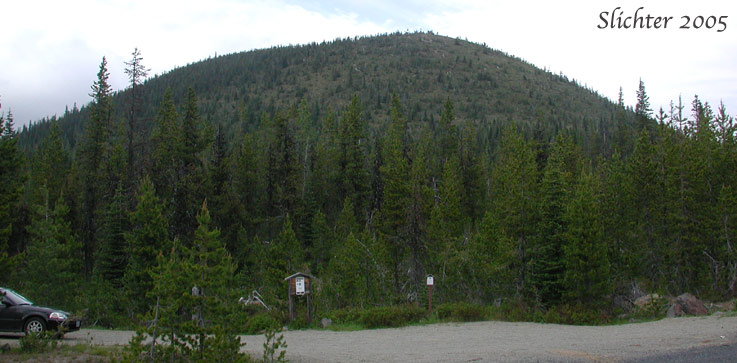
Note: The eastern half of Potato Hill is Yakama Nation lands. The boundary is poorly marked by several widely-spaced metal stakes. Please make an effort to stay off their lands. In addition, since my visit nearing 20 years ago, the timber on this old cinder cone has grown considerably taller so any views of the surrounding scenery will be minimal.
Access to the Trailhead:
From Trout Lake: Drive north on Road #23 25.6 miles to a junction with paved Road #2329. Proceed right on Road #2329 for 11 miles until its junction with paved Road #5603. Turn right at this junction and proceed uphill for over a mile until you reach the signed crossing of the Pacific Crest Trail #2000. Park in the small lot on the north side of the road.
From Seattle, Tacoma, Yakima and Portland: Proceed to Randle. Proceed south of Randle on State Route 131 for 0.9 miles. Turn left (east) onto forest Road #23 and proceed uphill to the junction with Road #2329 where you will turn left and proceed as mentioned above. You can also access the Potato Hill Trailhead from road 56 and then turning right onto Road #5603 and following it to the trailhead.
Low Elevation: ~4750' (GPS: )
High Elevation: 5387' (~GPS: )
Elevation Gain: 637'
Length of Hike: about 1 1/2-2 miles round trip, depending on your cross country route.
Views from the summit area extend southwest towards Council Butte and the Dark Divide, south to the looming presence of Mt. Adams, and eastwards into the upper Klickitat River basin. Views to the northeast give fairly close views of the eastern portions of the Goat Rocks. The summer encampments of the Yakamas (I'm assuming these are used to pick berries) may be views at the eastern base of Potato Hill. On days with low cloud cover, Mt. Adams appears as a large rounded island floating on a cloudy sea. During weekdays, an occasional log truck hauls logs from logged areas on the northeastern slopes of Mt. Adams along Road #5603 viewed below.
July 12, 2005: Potato Hill - Accessed via Pacific Crest Trail from trailhead on Forest Rd. 5603
June 21, 2005: Potato Hill - Accessed via Pacific Crest Trail from trailhead on Forest Rd. 5603